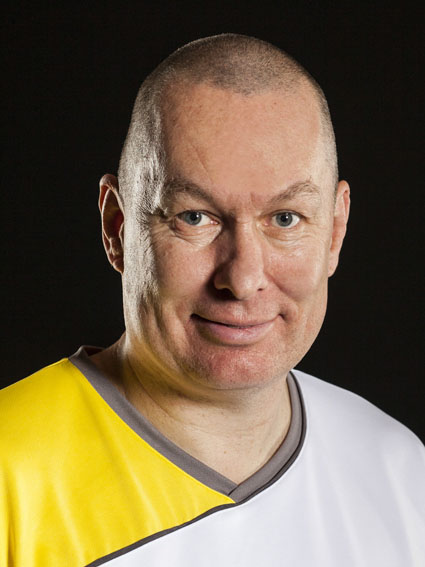It's Ip Man's fault!
It's all Ip Man's fault – the one in the films, not the real Yip Man! Yes, the real-life grandmaster called himself Yip Man, not Ip Man, but that is another story. At least I believe that Ip Man is to blame for the expectations of what "real" WingTsun (or Wing Chun or Ving Tsun etc.) should look like. When teaching I sometimes joke as I explain something, by saying: "See, that's the right way to do it, because Ip Man does the very same in the film …"
|
|
 |
As much as I like the Ip Man films – not least because they have made our martial art better known to the public – they do not depict the real life of Yip Man, and the fight scenes are highly exaggerated: Ip Man first fights around a hundred Japanese black belts, then Mike Tyson, and in the next episode he will probably go up against aliens or North Korea or similar …
The problem is not just that the film cliché arouses expectations of what WingTsun should look like. There are WingTsun (or Wing Chun, Ving Tsun etc.) followers who believe that only techniques familiar from the forms should be seen in their fighting movements.
What is wrong with that?
With the exception of the Wooden Dummy form, one does not learn the forms in order to apply them on a 1:1 basis, but rather to learn various things from them.
- Those who are advanced in WingTsun no longer apply techniques, but have developed capabilities and reactions and move in a biomechanically optimised way based on principles. It is quite ok for the beginner to learn techniques though, as these serve as examples by which the principles can be understood and absorbed.
- When a reaction – e.g. a BongSao – is caused, it is adapted to the partner/opponent.
The position versus the opponent and the purpose of the BongSao have formed it and make it look the way it does. A "standard" BongSao as learned in e.g. the SiuNimTau is a "work in progress" that has not been adapted to the situation, which of course changes constantly.
- "Form follows function" has various meanings in WingTsun. In this editorial I will not go into the further meaning of function in iWT, which follows the mathematics of Frege.
One of the fundamental and simple meanings is the one already arrived at during the Bauhaus era in architecture. Briefly explained, this is that for e.g. buildings or products, it is not the appearance but the function that takes priority. And that also applies in our WingTsun. The visual appearance of my WingTsun movements must first and foremost give way to pure functionality when it comes to self-defence.
- The question always remains why some things look quite different than they were originally, e.g. in Hong Kong. One reason is that here in Europe, we are more purpose-oriented. Many years ago, as part of his university research work, Prof. GM Keith R. Kernspecht introduced the principle of reverse planning. He analysed what actually happens on the street – in contrast to the protected school environment in which we train. One example is that out in the streets, you will usually not encounter straight, vertical WingTsun punches but rather wild, curving punches from various angles – so-called haymakers. If such punches are incorporated into PoonSao and ChiSao in general, my reactions must look quite different (e.g. whole-body movements). If I want to "stick" to the attacking arm, this gives rise to arm movements that are completely different from those traditionally prescribed in the forms. This is why GM Kernspecht has written that the movements employed in real combat correspond more to ChiSao movements than to those in the forms.
- To avoid incest, we in the EWTO have experimented with a wide range of influences from other styles. In recent years GM Kernspecht has accordingly explored various inner styles, while GM Thomas Schrön and I have taken a close look at the grappling and MMA scene. You can only defend yourself effectively against them if you know the attackers, or the specific methods of attack. And anybody not practicing for them will get the shock of his life when confronted with someone who is not his student or training partner. The internet is full of videos in which masters or even grandmasters fail completely in real situations, as they have no clue what they are up against, but instead expect an opponent to attack them with techniques from their own style.
We want to avoid surprises like this for our students, which is why we practice exercises that include the attacks or movement patterns of other styles.
- Combat is chaotic: a fight has so many factors that we cannot approach the problem in purely technical terms. It is a cybernetic system for which we can only prepare ourselves well by developing certain capabilities. This is why GM Kernspecht arrived at the "Big 7 capabilities" for self-defence some years ago.
When we train for these capabilities, it does not look like WingTsun as he imagined it to the outsider.Example 1: Two students are each given a padded stick to see which can hit the other first – without defining rules beforehand, practicing for specific situations or performing stick defences etc.
Example 2: Two students are put on a mat and told to wrestle. The one whose foot leaves the mat first loses. It is with such exercises, which usually look chaotic, that the "Big 7" and other capabilities are developed.
- There is too much generalisation. Statements by the teacher are often interpreted incorrectly because they are not understood as applying to specific situations, but rather taken as a general rule.
Examples:
- The stance or step must always be single-tracked.
- The thumb must lie flat during a TanSao.
- The WingTsun punch must always be vertical, with the elbow centred etc.
The facts are these:
- A single-tracked step or stance is counter-productive in many situations, but perfect in others. By the way, traditional WingTsun also has a double-tracked stance and step, namely in the Double Knives form!
- The thumb is sometimes extended and very "tricky", and can help you to feel more, block the opponent or pull him. But used in the wrong situation, it can also be broken by the opponent. This is why our maker gave us a joint that we can flatten or extend as required – depending on the situation!
- The close, vertical WingTsun punch taught in e.g. the SiuNimTau makes sense when it comes to blocking an opponent's arm from outside or punching through a gap. From a flanking position, it usually makes more sense to use a horizontal fist with the elbow outwards, as a straight punch cannot reach its target if the opponent raises his shoulder and lowers his head. Anybody who believes that this is not in line WingTsun tradition should take a look at the BiuTze form.
Anybody who only judges WingTsun by appearance (e.g. by photos and videos), i.e. according to his understanding of WingTsun when he was a beginner, has either remained stuck in the beginners' WingTsun programme or practices WingTsun for historical reasons. In other words, he wants to copy everything exactly as it used to be done, without thinking about whether it is in keeping with the times or indeed effective.
I like to compare this with developments in medicine, where progress is also often impeded by traditionalists: drilling a hole in a patient's skull so that the sickness can escape is hardly conducive to his wellbeing.
So by all means let's enjoy the Ip Man films for what they are: entertainment with a dash of fantasy, a distraction. But let's keep our eyes on reality when we are training! WingTsun does not manifest itself in techniques, but in principles.
Keep enjoying your reality-related WingTsun training!
Your Oliver König




